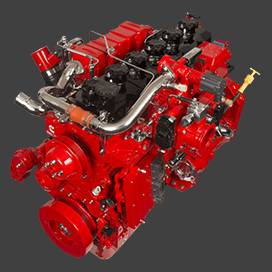Nov . 20, 2024 00:41 Back to list
18 wheeler brake drum
Understanding the Importance of 18-Wheeler Brake Drums
When it comes to the massive vehicles that dominate our highways—18-wheelers—safety is paramount. One crucial component that plays a key role in ensuring the safety of these trucks is the brake drum. The brake system in an 18-wheeler is complex and vital, and the brake drum is at the heart of it. In this article, we will explore the function, importance, maintenance, and innovations surrounding brake drums in 18-wheelers.
What is a Brake Drum?
A brake drum is a vital part of a drum brake system. It is a cylindrical component that rotates with the wheel and provides a surface for the brake shoes to press against when the brakes are applied. The interaction between the brake shoes and the brake drum creates the friction necessary to slow down or stop the vehicle. In 18-wheelers, which can weigh up to 80,000 pounds when fully loaded, this component is essential for safe operation.
The Function of Brake Drums in 18-Wheelers
The brake drum is designed to dissipate heat generated through the friction between the brake shoes and the drum surface. Given the size and weight of 18-wheelers, the braking process generates substantial heat. If the heat is not managed properly, it can lead to brake fade, which significantly reduces the braking efficiency and can result in catastrophic failures.
Moreover, the brake drum must withstand considerable forces. When a truck is moving at high speeds or is fully loaded, the force exerted on the brakes becomes enormous. This necessitates a robust design and material choice for brake drums, typically fashioned from cast iron or aluminum, which can handle these extreme conditions.
Importance of Brake Drums
The importance of brake drums cannot be overstated. They are critical to the overall braking system's performance. Reliable brake drums ensure that truck drivers can control their vehicles effectively, especially under heavy loads or in emergency situations. A malfunctioning or damaged brake drum can lead to serious accidents, making regular inspection and maintenance vital for road safety.
18 wheeler brake drum

Additionally, brake drums contribute not only to the immediate safety of the vehicle but also to the safety of other road users. Effective braking systems help prevent collisions, protecting drivers, passengers, and pedestrians alike.
Maintenance of Brake Drums
Regular maintenance of brake drums is essential for ensuring their proper function over time. This includes routine inspections by qualified technicians who can assess wear and tear, check for cracks, and measure the drum thickness. Over time, with constant use, brake drums will wear down, and if they become too thin or develop significant wear patterns, they need to be replaced.
Some signs that indicate brake drums may need attention include unusual vibrations during braking, a decrease in braking performance, or any unusual noises (such as grinding or squealing) when applying the brakes. Timely action can prevent more extensive damage to the braking system and ensure safe vehicle operation.
Innovations and Future Trends
As technology advances, so too does the design and functionality of brake drums in heavy-duty vehicles. Modern brake drums are being developed with materials that improve heat dissipation and increase overall durability. Furthermore, some manufacturers are exploring the use of composite materials that can reduce weight while maintaining strength.
Innovation is also leading to better designs that promote easier maintenance and longer service intervals, which can be critical for fleet operators looking to minimize downtime and reduce costs. The incorporation of advanced monitoring systems that can alert drivers to issues in real-time is another exciting development in brake technology.
Conclusion
In summary, the brake drum plays an integral role in the safety and performance of 18-wheelers. Its ability to handle the immense stresses placed upon it during operation makes it a vital part of the vehicle's braking system. Regular maintenance and the adoption of innovative technologies can further enhance the functionality and reliability of brake drums, ensuring that these massive vehicles can operate safely on our roads. As the trucking industry continues to evolve, understanding and investing in brake systems will remain crucial for safe transportation.
-
HINO Industrial Solutions - ¡Ң���ຽ��е��������˾ | Advanced Technology&Reliability
NewsJul.13,2025
-
HINO Industrial Efficiency-Jiangsu Hino Industrial|Productivity Optimization&Cost Reduction
NewsJul.12,2025
-
HINO-¡Ң���ຽ��е��������˾|Advanced Industrial Solutions&Energy Efficiency
NewsJul.12,2025
-
Premium Brake Drum Iveco – Durable Drum Brake Drum & Brake Shoe Solutions
NewsJul.08,2025
-
High-Performance Brake Drum Liza for Enhanced Safety Reliable Drum Brake Drum & Brake Shoe Solutions
NewsJul.08,2025
-
High-Quality Brake Drum MAZ – Durable Drum Brake Drum & Brake Drum and Brake Shoe for Optimal Performance
NewsJul.07,2025
